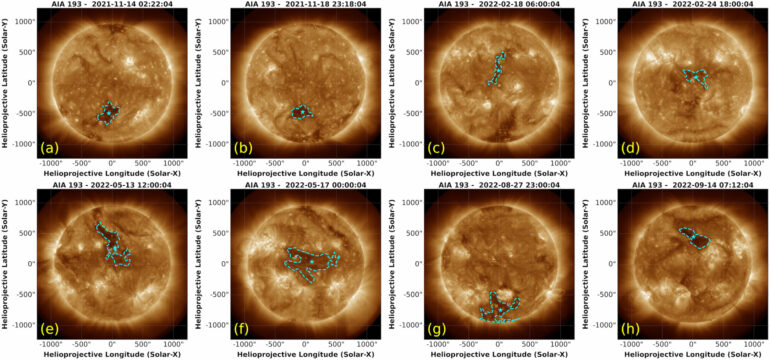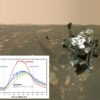On Sept. 5, 2022, NASA’s Parker Solar Probe soared gracefully through one of the most powerful coronal mass ejections (CMEs) ever recorded—not only an impressive feat of engineering, but a huge boon for the scientific community. Parker’s journey through the CME is helping to prove a 20-year-old theory about the interaction of CMEs with interplanetary dust, with implications for space weather predictions. The results were recently published in The Astrophysical Journal.
A 2003 paper theorized that CMEs may interact with interplanetary dust in orbit around our star and even carry the dust outward. CMEs are immense eruptions from the sun’s outer atmosphere, or corona, that help drive space weather, which can endanger satellites, disrupt communications and navigation technologies, and even knock out power grids on Earth. Learning more about how these events interact with interplanetary dust could help scientists better predict how quickly CMEs could travel from the sun to Earth, forecasting when the planet could see their impact.
Parker has now observed this phenomenon for the first time.
“These interactions between CMEs and dust were theorized two decades ago, but had not been observed until Parker Solar Probe viewed a CME act like a vacuum cleaner, clearing the dust out of its path,” said Guillermo Stenborg, an astrophysicist at the Johns Hopkins Applied Physics Laboratory (APL) in Laurel, Maryland, and lead author on the paper. APL built and operates the spacecraft.
This dust is made up of tiny particles from asteroids, comets, and even planets, and is present throughout the solar system. A type of faint glow called zodiacal light, sometimes visible before sunrise or after sunset, is one manifestation of the cloud of interplanetary dust.
The CME displaced the dust all the way out to about 6 million miles from the sun—about one-sixth of the distance between the sun and Mercury—but it was replenished almost immediately by the interplanetary dust floating through the solar system.
In-situ observations from Parker were critical to this discovery, because characterizing dust dynamics in the wake of CMEs is challenging from a distance. According to the researchers, Parker’s observations could also provide insight into related phenomena lower down in the corona, such as coronal dimming caused by low-density areas in the corona that often appear after CMEs erupt.
Scientists observed the interaction between the CME and dust as decreased brightness in images from Parker’s Wide-field Imager for Solar Probe (WISPR) camera. This is because interplanetary dust reflects light, amplifying brightness where the dust is present.
To locate this occurrence of decreased brightness, the team had to compute the average background brightness of WISPR images across several similar orbits—sifting out normal brightness variations that occur due to solar streamers and other changes in the solar corona.
“Parker has orbited the sun four times at the same distance, allowing us to compare data from one pass to the next very well,” Stenborg said. “By removing brightness variations due to coronal shifts and other phenomena, we were able to isolate the variations caused by dust depletion.”
Because scientists have only observed this effect in connection with the Sept. 5 event, Stenborg and the team theorize that dust depletion may only occur with the most powerful CMEs.
Nevertheless, studying the physics behind this interaction may have implications for space weather prediction. Scientists are just starting to understand that interplanetary dust affects the shape and speed of a CME. But more studies are needed to understand these interactions better.
Parker completed its sixth Venus flyby, using the planet’s gravity to sling itself even closer to the sun for its next five close approaches. This occurs as the sun itself is approaching solar maximum, the period in the sun’s 11-year cycle when sunspots and solar activity are most abundant. As the sun’s activity increases, scientists hope to have the opportunity to see more of these rare phenomena and explore how they might affect our Earth environment and the interplanetary medium.
More information:
Guillermo Stenborg et al, Investigating Coronal Holes and CMEs as Sources of Brightness Depletion Detected in PSP/WISPR Images, The Astrophysical Journal (2023). DOI: 10.3847/1538-4357/acd2cf
Citation:
Parker probe observes powerful coronal mass ejection ‘vacuum up’ interplanetary dust (2023, September 18)



